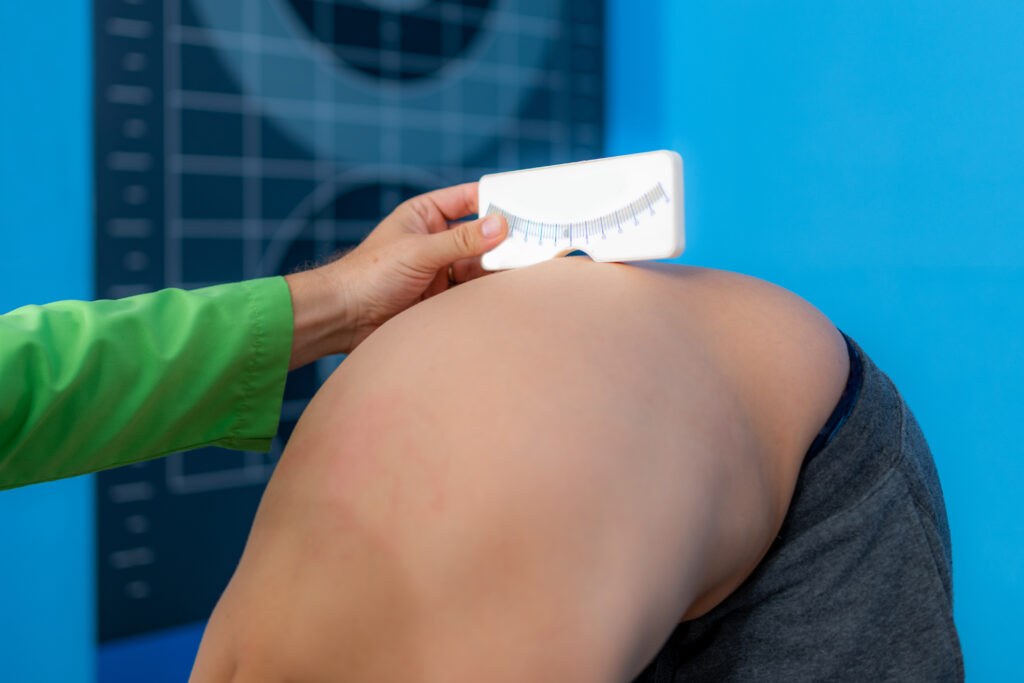Scoliosis, a lateral curvature of the spine, is a condition that often manifests during childhood or adolescence. In managing scoliosis in kids, one of the key interventions is bracing. However, the effectiveness of scoliosis bracing for kids varies, and it hinges on factors such as the severity of the curve and the individual needs of the child. Let’s see the nuances of effective scoliosis bracing for kids, exploring different aspects such as the duration of brace usage and the types of braces available.
Tailoring Bracing to the Child: One Size Doesn’t Fit All
Effective scoliosis bracing for kids is not a one-size-fits-all solution. Dr. Andrew Strauss emphasizes the importance of tailoring the bracing approach to each child’s unique circumstances. “We want to look at that particular child and make the brace effective for that specific case,” says Dr. Srauss. This involves considering factors such as the severity of the curve and the child’s lifestyle.
Determining the Right Duration of Brace Usage
The duration of brace usage is a critical factor in the effectiveness of scoliosis treatment. The recommended hours of brace usage can vary based on the severity of the curve. For milder cases, using the brace only at night while the child is sleeping might be sufficient. However, for more significant curves, the recommendation might be 16 to 21 hours a day.
Insights from Research: Validating Adult Scoliosis Bracing
While there is a substantial body of research validating the efficacy of bracing for adults with scoliosis since 2016, the landscape is different when it comes to pediatric cases. There is an existing research on adolescent bracing butwe need to personalize the approach for children. Adult scoliosis bracing has been validated and proven very effective in reducing curve sizes. However, for children, we need to go beyond generalizations and tailor the treatment to each unique case.
The Role of Brace Design: Seven Types for Varied Needs
One key aspect of effective scoliosis bracing is selecting the right type of brace. Dr. Strauss’s clinic employs seven different types of braces, each designed to address specific needs. The diversity in brace options allows for a more personalized approach to treatment. We’re going to select the brace model and design that’s most appropriate for that particular child. This underscores the importance of customizing the treatment plan to the individual child’s requirements.
Balancing Effectiveness and Comfort
Ensuring the effectiveness of scoliosis bracing for kids involves striking a balance between treatment efficacy and the child’s comfort. The type of brace and the duration of usage should be tailored to not only effectively address the curvature but also to make it feasible and comfortable for the child. This approach increases adherence to the treatment plan and enhances its overall effectiveness.
Incorporating Lifestyle into Treatment Plans
Another crucial aspect of effective scoliosis bracing is considering the child’s lifestyle. It is important to understand the child’s daily activities and routines when devising a bracing plan. We want to make it so that the amount of time the brace is worn is correct and the type of brace selected aligns with the child’s lifestyle. This holistic approach ensures that the bracing intervention seamlessly integrates into the child’s life.
The Role of Parental Support and Education
Parental involvement is integral to the success of scoliosis bracing for kids. Parents should be educated about the treatment plan and involved in the decision-making process. Parents play a crucial role in ensuring that the child adheres to the bracing routine. It’s essential to provide them with the necessary information and support. Educated and supportive parents contribute significantly to the overall effectiveness of scoliosis bracing.
Monitoring Progress and Making Adjustments
Regular monitoring of the child’s progress is essential in ensuring the ongoing effectiveness of scoliosis bracing. Periodic check-ups are recommended in order to assess the impact of the brace on the curvature and make necessary adjustments to the treatment plan. This dynamic approach allows for real-time modifications, ensuring that the child receives the optimal level of support throughout the treatment period.
A Personalized Approach to Effective Scoliosis Bracing for Kids
In conclusion, effective scoliosis bracing for kids involves a personalized and holistic approach. Tailoring the treatment plan to the individual child’s needs, considering the severity of the curve, and selecting the right type of brace are pivotal in achieving positive outcomes. As research continues to evolve, and new insights emerge, it is imperative to stay attuned to the latest developments in pediatric scoliosis management. With a comprehensive and individualized approach, we can empower children with scoliosis to lead active, fulfilling lives.
Also read: What is Juvenile Scoliosis?
About:
Dr. Strauss is the director of the Hudson Valley Scoliosis Correction Center in New York. He has been actively engaged in scoliosis treatment for the past 30 years and has authored two books on the subject, Your Child Has Scoliosis and The Truth About Adult Scoliosis.
He is Vice President of the CLEAR Scoliosis Institute and a lecturer for their introductory and advanced workshops. He is certified in scoliosis bracing and in the use of scoliosis specific exercises. Dr. Strauss is a graduate of the ISICO World Masters of Scoliosis.His postgraduate studies also include a Masters Degree in Acupuncture as well as training in Grostic, Pettibon, CBP, Clinical Nutrition, Chinese Herbal Medicine, Manipulation under Anesthesia, and Electrodiagnosis.
His scoliosis practice has treated patients from 25 states and 32 other foreign countries.If you have questions about childhood and adult scoliosis and how it can be successfully treated without surgery subscribe to our channel!
